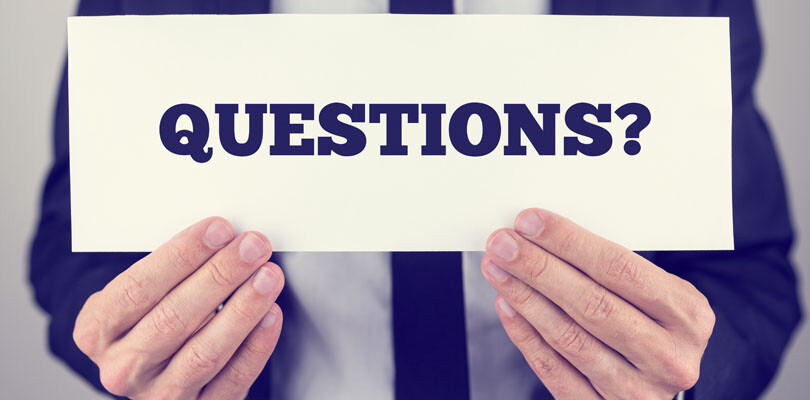Your Top LinkedIn Advertising Questions, Answered
The LinkedIn Marketing Solutions team takes pride in being a social bunch. We like to attend, cover, and even host our share of content marketing events. As you might imagine, we’ve been approached by quite a few marketers over the years who want the inside scoop on LinkedIn’s various advertising solutions.
Today, your questions get answered. We’ve rounded up our answers to the top LinkedIn advertising questions from marketers around the globe, in hopes of helping you conquer your goals via advertising on LinkedIn. Let’s dive right in, shall we?
Q: When you’re testing different copy images or audiences with LinkedIn Direct Sponsored Content, are you setting up wholly separate campaigns and testing each campaign against the other, or are you testing different pieces of content within a single campaign?
A: It depends on our goals. If we’re trying to check the impact of our campaigns on engagement or clicks, we’ll run the tests within the same campaigns. However, if we want to track conversions (or marketing qualified leads we’re turning over to sales), we’ll run them separately because we need to enter two separate URLs in Salesforce. We use UTM parameters for tracking.
Q: My campaign has gotten a lot of impressions, but the click-through rate is still kind of low. How can I raise the click-through rate?
A: You can try a few things. First, make sure that your posts include some kind of visual or image. Uploading a larger piece of rich media is a proven way to capture a member’s attention in their feed and drive higher engagement rates. We’ve found the best size is 1200 pixels by 627 pixels. If your image includes text, we recommend that you center the text with a little bit of margin on all sides.
Next, ask yourself if the message of your content matches the interest of your target audience. Say you’re targeting marketing directors at companies in the software industry and are promoting a guide on how to boost SaaS sales. This audience likely wouldn’t be interested in a guide that explores ways to set up a sales team, but probably would be interested in a guide showcasing effective marketing campaigns for SaaS offerings.
Another tactic is to post three to five organic updates to your LinkedIn Company Page and monitor those posts for one or two weeks to see which posts drive the most engagement. Then, sponsor the highest performing updates. You can actually sponsor a piece of content directly from your LinkedIn Company Page if you’re a company page admin, or you can visit linkedin.com/ads to start a new sponsored content campaign. From there, you can select posts from your page to sponsor.
Q: How long would you let a piece of creative run in a campaign before refreshing the campaign with new content?
A: We keep a very close eye on performance both from a conversion rate and an engagement rate perspective. We sponsored one post for almost a year and it did extremely well. But when it finally tapered off in performance, we knew it was time to make a change.
When you’ve exhausted a piece of content, you can either: 1) Refresh the creative and the headline to boost engagement, or 2) Pull it completely and replace it with another offer.
Q: How can smaller businesses with small content budgets create content to sponsor on LinkedIn? What are some ideas for getting and/or producing cost-effective content?
A: We see content opportunities everywhere. Your company website is a great place to start, since company news, blog posts, and recent case studies are all shareable. We’ve also mastered the art of repurposing. If you can invest in producing one large content asset (which we refer to as a “Big Rock”) like an eBook that covers a topic or a question that’s top of mind among your audience, you can then promote that through multiple Sponsored Content posts. In fact, we’ve sponsored some of our own eBook updates over three, six, nine, or more months.
Then -- like us -- you can carve that eBook up into blog posts, webinars, SlideShares, infographics, podcasts, etc. For example, you could publish a separate blog post covering each chapter or even cover sub-topics within the eBook. If you’re not sure where to start with your Big Rock, start with the keyword you want to rank for or conduct social listening to see what pressing issues your target audience is discussing. Then produce a piece of content that establishes your company as the most useful resource on that topic, and you boost the likelihood of prospects thinking of you first when it’s time to make a purchase.
Q: What’s a good audience size for advertising on LinkedIn?
A: When you create a Sponsored Content campaign, a forecasting tool shows you how many members your target audience contains and your highest potential reach. While a good rule of thumb is to target at minimum 300,000 LinkedIn members, aim for 500,000 or more if you can. Remember: the more niche your audience, the harder it will be to generate a solid ROI.
A good strategy is to adopt a test-and-learn approach: start with a broad target, see which audience segments are engaging and then narrow it down from there. Specifically, start with a broad target audience and then use the analytics and Campaign Manager tools within LinkedIn to identify the kinds of members and audience segments that are most engaged with your content. Then refine your targeting to focus on those types of members and audience segments.
Hungry for more experience-driven insight? Get behind-the-scenes access to our most proven tactics by downloading our eBook, The Secret Sauce: How LinkedIn Uses LinkedIn for Marketing.




